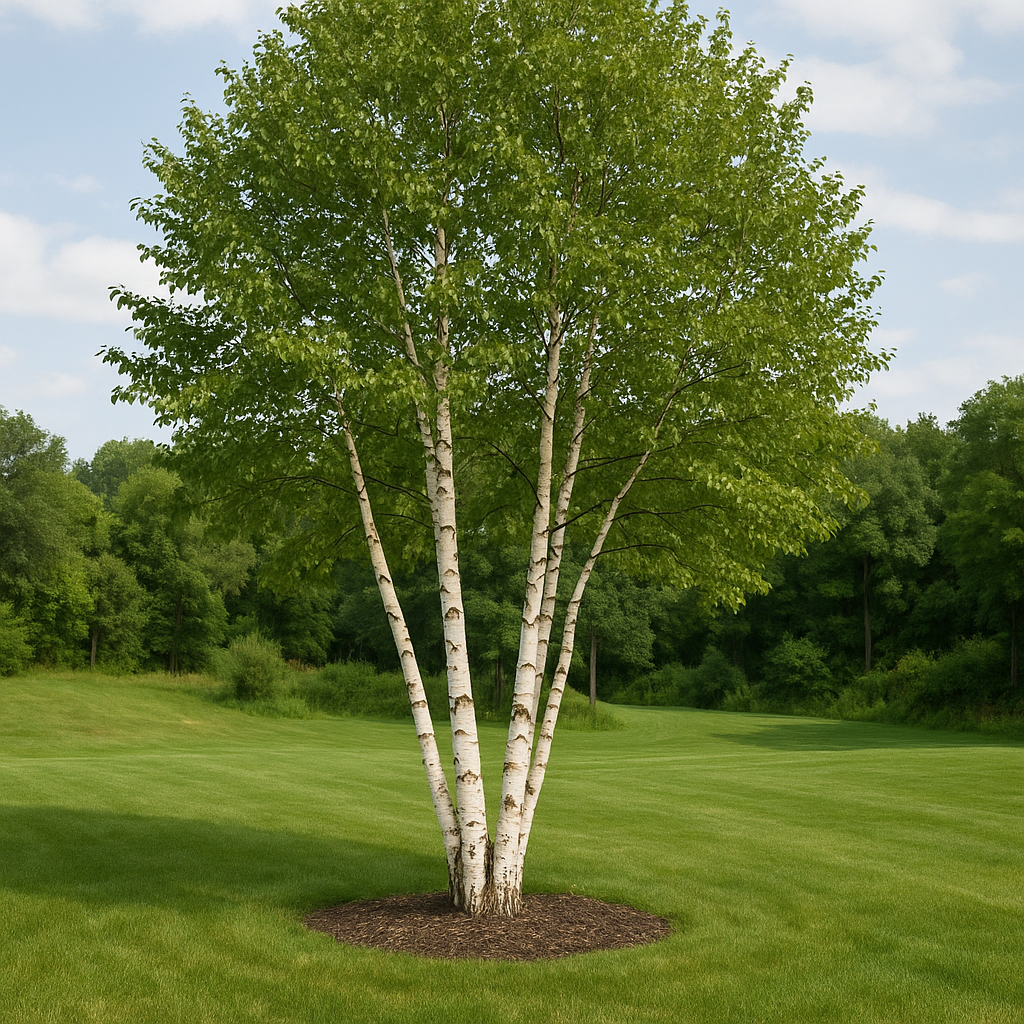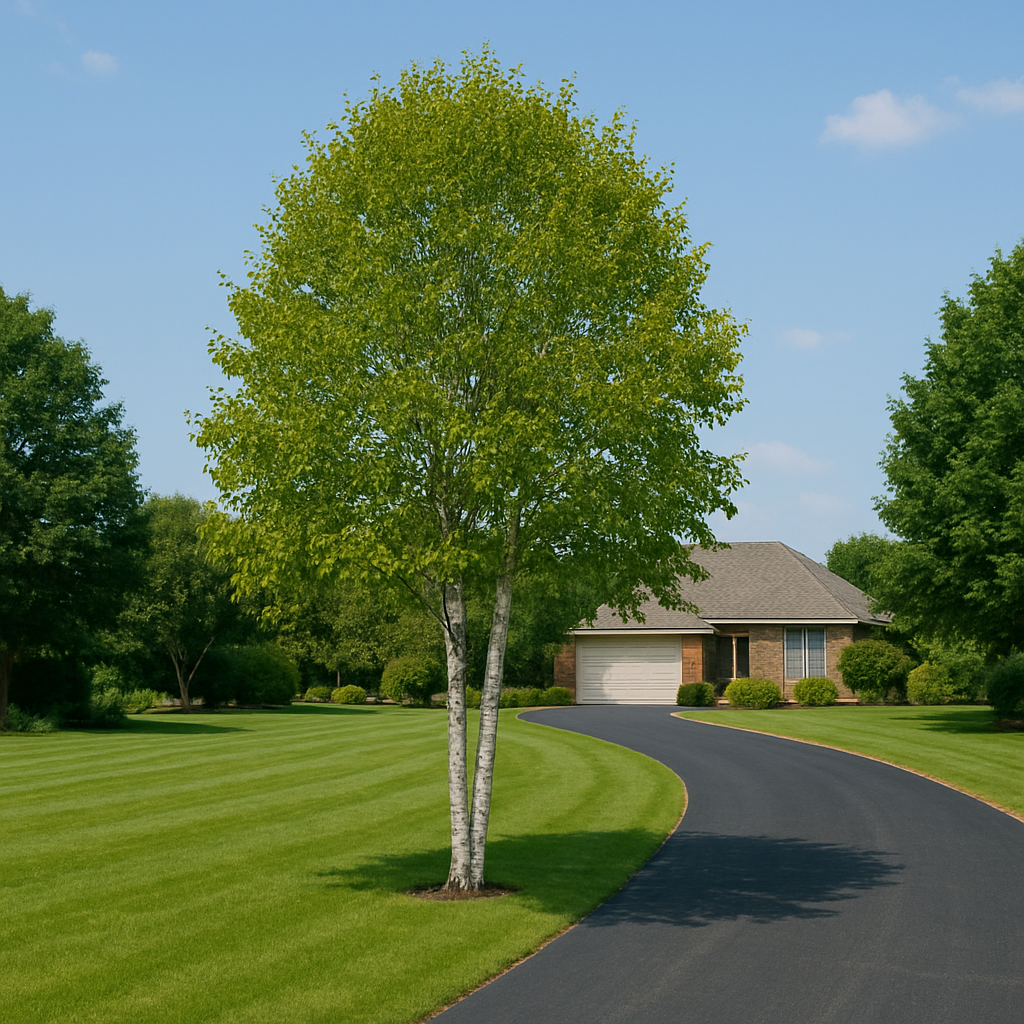Limited Quantities - Reserve Now For Fall
River Birch Tree
River Birch Tree
Couldn't load pickup availability
The River Birch Tree is a fast-growing, adaptable deciduous tree known for its distinctive peeling bark, graceful branching, and strong tolerance to wet conditions. As one of the most heat- and disease-resistant birch species, it is an excellent choice for erosion control, shade, and ornamental beauty. With its attractive multi-colored bark, vibrant yellow fall foliage, and ability to thrive in various soils, the River Birch is a low-maintenance, high-impact tree perfect for any landscape.
River Birch Tree
| Attribute | Details |
|---|---|
| Variety | Rooted |
| Botanical Name | Betula nigra |
| Common Names | River Birch, Black Birch, Water Birch |
| Mature Height | 40-70 feet |
| Mature Width | 30-50 feet |
| Growth Rate | Fast (2-3 feet per year) |
| Lifespan | 50-75 years |
| USDA Hardiness Zones | 4-9 |
| Sun Preference | Full sun to partial shade |
| Soil Type | Well-drained, loamy, sandy, or clay soils |
| Soil pH | Slightly acidic to neutral (5.0-7.0) |
| Water Needs | Moderate to high; thrives in moist or wet soils but tolerates drought once established |
| Fall Foliage | Yellow |
| Wildlife Attraction | Birds, pollinators, small mammals |
| Growth Habit | Upright with a spreading canopy; often multi-trunked |
| Self-Pollinating? | Yes |
| Landscape Uses | Shade tree, erosion control, rain gardens, ornamental planting, urban landscaping |
| Maintenance Level | Low |
Environmental Benefits
💧 Thrives in Wet Areas & Prevents Erosion – Naturally found along riverbanks and wetlands, it stabilizes soil and reduces runoff, making it ideal for rain gardens and erosion-prone landscapes.
🌿 Air Purification & Urban Tolerance – Absorbs pollutants and improves air quality, thriving in urban and suburban environments.
🐦 Wildlife Habitat & Pollinator Support – Produces flowers that attract bees and butterflies, while its seeds provide food for birds and small mammals.
🍂 Multi-Season Interest – Features attractive exfoliating bark in shades of cinnamon, salmon, and brown, lush green summer leaves, and vibrant yellow fall foliage.
Pros & Cons
| Pros | Cons |
|---|---|
| Fast-growing and provides excellent shade | Requires ample space to grow due to its wide canopy |
| Distinctive peeling bark adds year-round interest | Shorter lifespan compared to some hardwood trees |
| Highly resistant to pests, diseases, and heat | Prefers moist soil, so may need extra watering in dry climates |
| Tolerant of urban pollution and compacted soils | Shallow roots may compete with nearby plants for moisture |
| Great for rain gardens and wet landscapes | Can drop leaves and twigs in windy conditions |
Planting & Care Guide (Bare Root)
- Spacing: Plant 30-50 feet apart for full canopy development
- Soaking: Soak bare root in water for 6-12 hours before planting
- Planting Depth: Dig a hole twice the width of the root system, ensuring roots are level with the soil surface
- Mulching: Apply a 2-3 inch layer of mulch to retain moisture and suppress weeds
- Pruning: Minimal pruning required; remove dead or lower branches in late winter or early spring
- Fertilization: Use a balanced slow-release fertilizer in early spring to encourage strong growth
- Watering: Water regularly during the first year, then reduce as the tree matures
The River Birch Tree is a beautiful, fast-growing, and environmentally beneficial tree that provides shade, erosion control, and wildlife support. Whether planted as a shade tree, ornamental centerpiece, or for water management, this resilient and low-maintenance tree is an exceptional addition to any landscape.
Share








